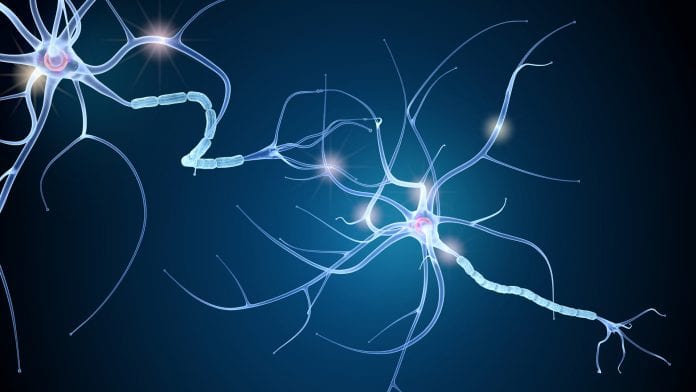
Miniature 3D brain models have been developed that could help accelerate the search for treatments for neurological conditions such as multiple sclerosis (MS).
A team of researchers at the University of Edinburgh’s Anne Rowling Regenerative Neurology Clinic and the Euan MacDonald Centre for Motor Neurone Disease Research has developed the millimetre-wide, 3D brain models that mimic aspects of the human nervous system using stem cells from human skin samples. The models will be used to study myelin – the insulating substance that helps nerve cells to communicate with one another.
The research, which was funded by the Euan MacDonald Centre and carried out in collaboration with the UK Dementia Research Institute and the MS Society Centre for MS Research at the University of Edinburgh, has been published in the journal Developmental Cell.
Studying myelin
Nerve cells found in the brain and the spinal cord connect to each other with branch-like links called axons. Axons have an insulating coat like electric cabling called myelin, which aids the electrical and chemical information flow between cells.
Damaged myelin underlies several neurological conditions including MS – an incurable disease affecting more than 100,000 people in the UK.
For the study, skin cells were reprogrammed into induced pluripotent stem cells, which were turned into spinal cord cells. These were then grown slowly into organoids – 3D structures of cell bundles including neurons and distinctive brain cells known as oligodendrocytes, that are key to creating myelin. This allowed the researchers to see myelin developing spontaneously around the axons between cells within the organoids.
They studied the axons under a microscope, finding that the myelin in the model was functioning as it would in a healthy brain or spinal cord.
The research team then created an organoid using stem cells from a patient with a rare gene mutation that affects myelination, the team then created an organoid model, which showed that key aspects of this cell bundle were consistent with the disease.
Lead researcher, Dr Owen Gwydion James, said: “Demyelinating disorders have a profound effect on the quality of life for patients. Now we have the capability of studying human myelination experimentally, a major goal is to identify drugs that can promote myelination. We believe that this new approach could be a huge boost to the toolbox that allows us to do this effectively.”
Accelerating drug discovery
The team says that the models are the most natural representation of human myelination developed in a lab and are a promising platform for studying neurological diseases and for testing drugs for conditions linked to myelin loss, including MS. They will allow scientists to compare the differences between the cells of healthy individuals and those with different neurological diseases.
The team also hope that the models will help overcome the challenges of studying the human brain and nervous system at the cellular level, however, they highlight that although the model is a significant step forward in the study of human myelination and drug development, treatments tested on this model are still some way from being offered to patients.






















